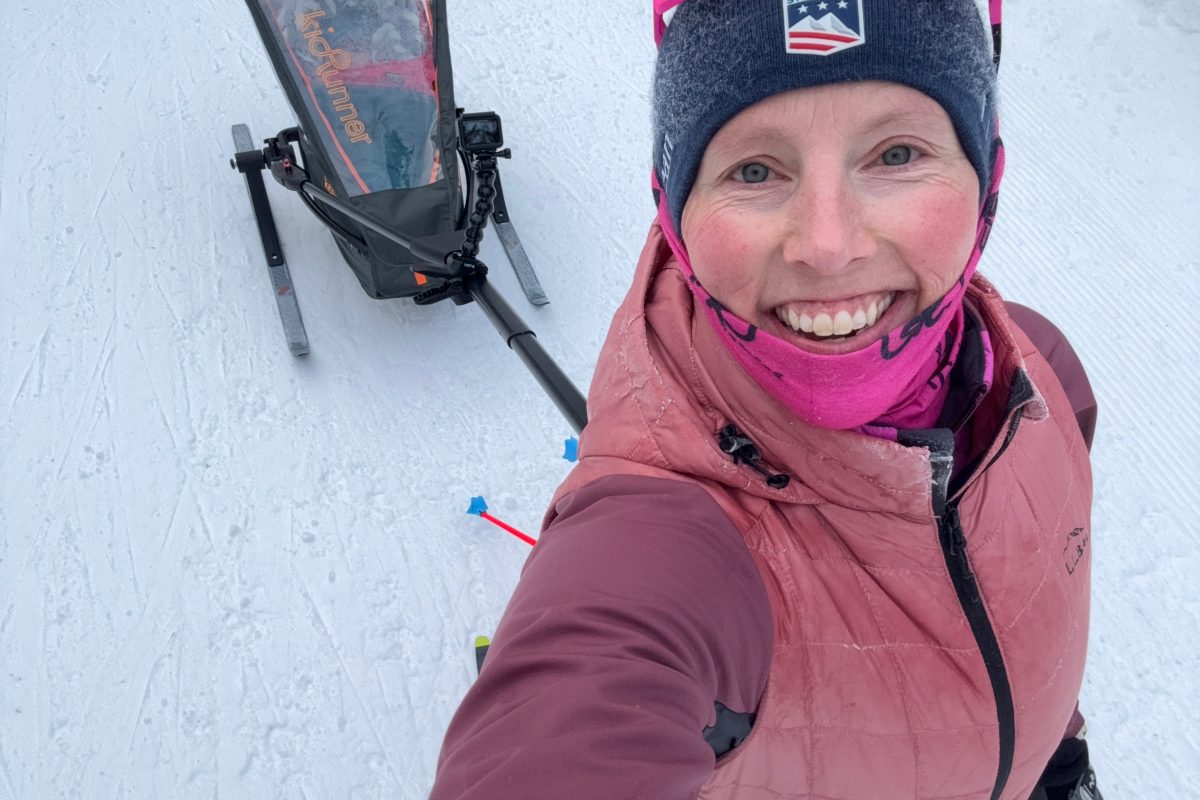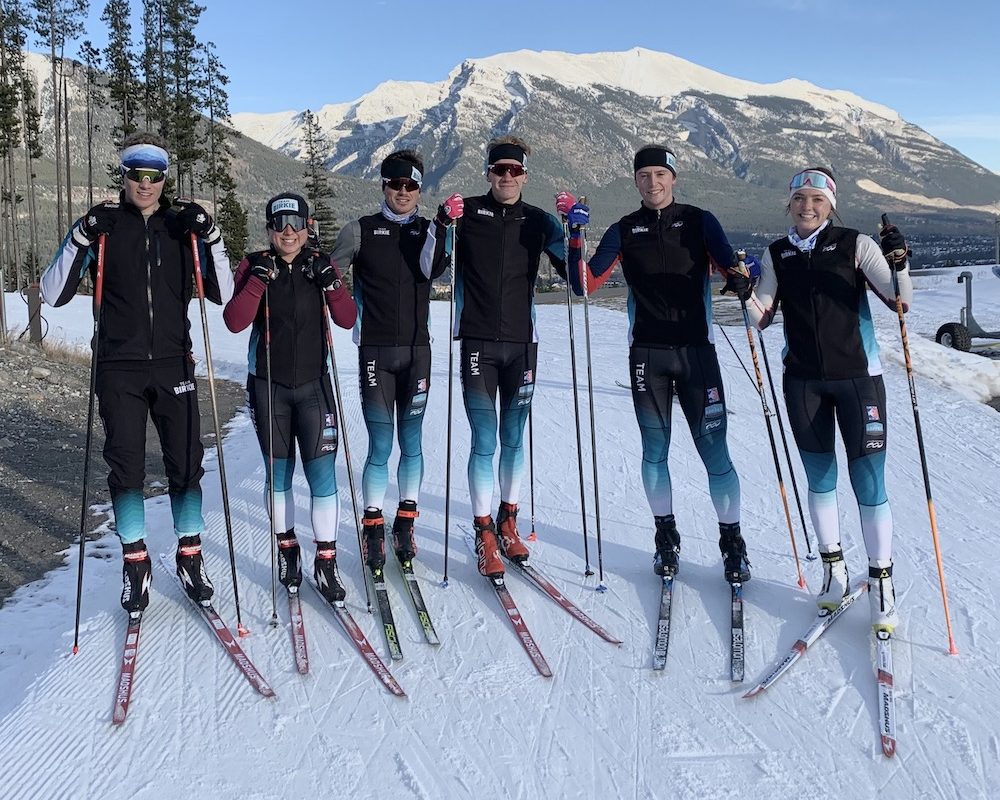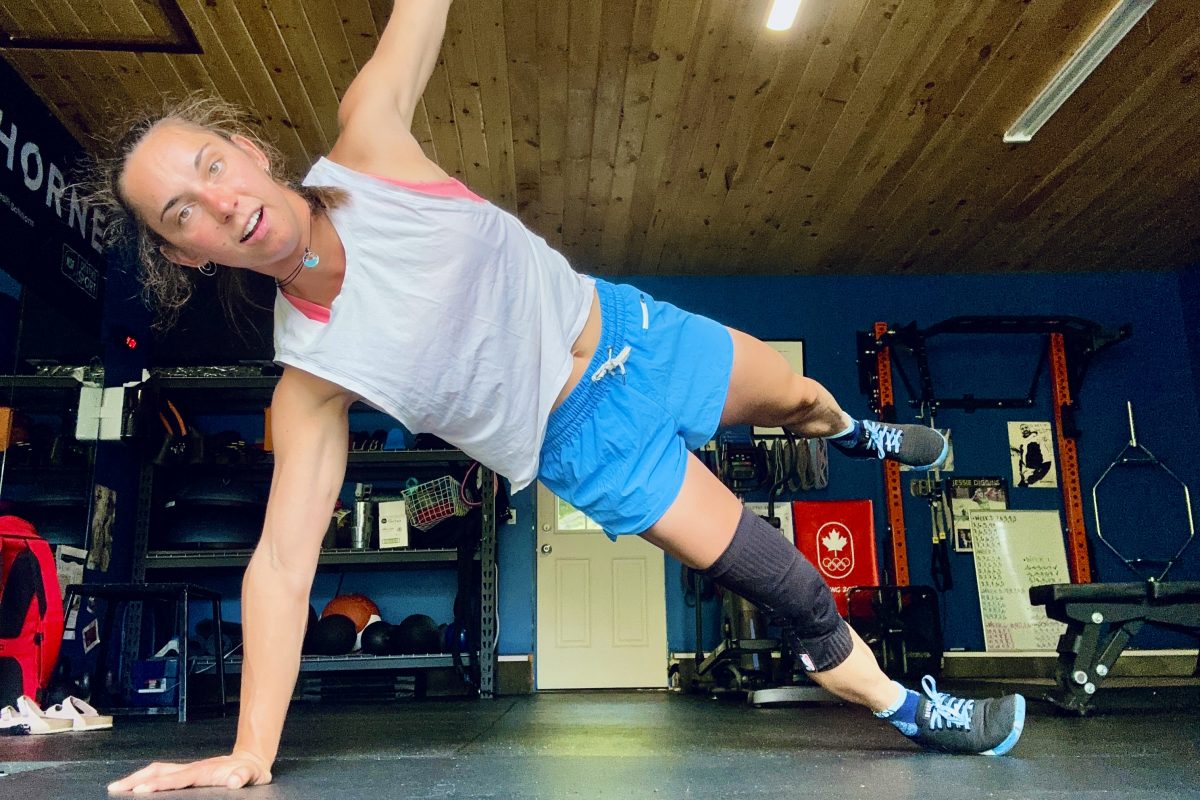This past week I learned to bobsled when I joined the U.S. National Bobsledding Team for one week of their training camp at the Lake Placid, NY Olympic Training Center. Somehow, through serendipitous circumstances and the help of bobsled driver Sara Sprung, whom I pushed for, I arranged my own fantasy bobsledding camp during a low-volume training week. I learned how to move the 400 lb sleds around; sharpen and care for the runners; how to dress, warmup and train for bobsledding; bobsledding terminology and routines; and, finally, how to slide. Those details can be found on my website ( www.lauravalaas.com ). What I take away from the experience at the end of the week and want to share with you is how to apply to skiing what I learned from bobsledding.
Bobsledding requires power. As Sara's brakeman I was responsible to start the sled moving with an explosive push off. All else being equal, one tenth of a second slower in the push translates into three tenths slower in the final time. In a sport that needs to time to the hundredth of a second, tenths of seconds matter. For me, this reinforced unequivocally the “go hard over the top of the hill” mantra. The brakeman, or pusher, gets one chance to start the sled moving with a two legged push-off against the starting block before she starts sprinting. This is the most crucial moment for the brakeman, when she draws on hours and hours of technique work and training. She gets only one chance to make this push-off the most powerful and efficient it can be. Skiers are lucky — we get thousands of such chances in a race. If we gave each push-off the importance that a bobsledder brakeman gives hers, we could take better advantage of our training and technique work.
Bobsledding requires commitment. Once the run starts, the sled will not stop and it will not slow down until after the finish line. If the pusher holds back at all, it shows. Also, as I quickly discovered, if you try to load into the sled without fully committing, you will not make it. Push with power, sprint with abandon, but load with conviction. Skiing lets you think you can get away without fully committing, without complete weight transfer, with committing only 95% of your body weight to your poles in a sprinting double pole, and with being a few degrees shy of good ankle flexion. Eventually, that will not be good enough. Skiers must commit to the body position and movement. In order to commit, they have to trust in their ability.
Bobsledding requires trust. As a brakeman, I had to trust my driver. Once I loaded into the sled, I was powerless to control it; my driver was responsible to get us down safely. Luckily, my driver, Sara Sprung, is the second best woman driver in the U.S. (the top U.S. driver won a silver medal at the Torino Olympics). I trusted Sara that her kevlar burn suit, training suit, and helmet that she let me borrow would protect me. I trusted Sara to make sure the runners were on tight enough and the sled was in good condition. Mostly, I trusted Sara and her five previous seasons of bobsledding not to crash on the most tortuous bobsledding track in the world. As skiers, it is important that we trust. We have to trust in ourselves, and we have to trust in others. We must trust our coaches, trust in the training programs they develop for us, and in their advice, insight, and wisdom. We also have to trust in whoever waxes our skis or gives us feeds. Only when we let go of our worries about the details we are not responsible for and place our trust in those helping us can we focus on our skiing.
Bobsledding requires focus. Skiers can lose focus in a race and recover from it, but if a bobsled driver loses focus, she crashes. Of course, it is easier to focus for a one minute bobsled run than a 10 km ski race. Bobsledding has a sense of urgency and pressure during the run. The urgency might come from sliding over 70 mph and the pressure might come from the 4-5 g's in the corners, or maybe it is there because the drivers know that mental focus makes the difference between a fast run and a slow run, between a smooth run and a crash. I hope to draw some of that intense focus that surrounded me at the bobsled start into my ski racing.
Finally, bobsledders have to love sliding. Bobsledding punishes the body; after only six runs I sport bruises and scrapes and my body aches. Bobsledders have to be a little crazy to hurl themselves down a steep ice chute, get their head slammed against the side of the sled in the corners, and risk crashing, but they slide because they love it. Skiing might be less brutal, but it is also hard on the body and requires investments of time, energy, thought, and money. We may try other sports and enjoy other activities, but when it comes down to what we sacrifice for and love to do, regardless of whether it is a long leisure ski or the thrill of ski racing, it is skiing.




